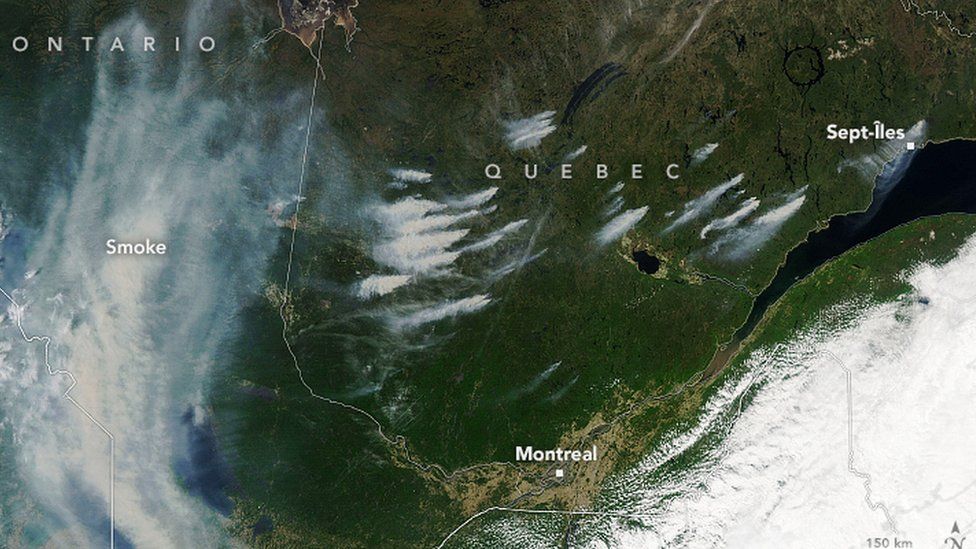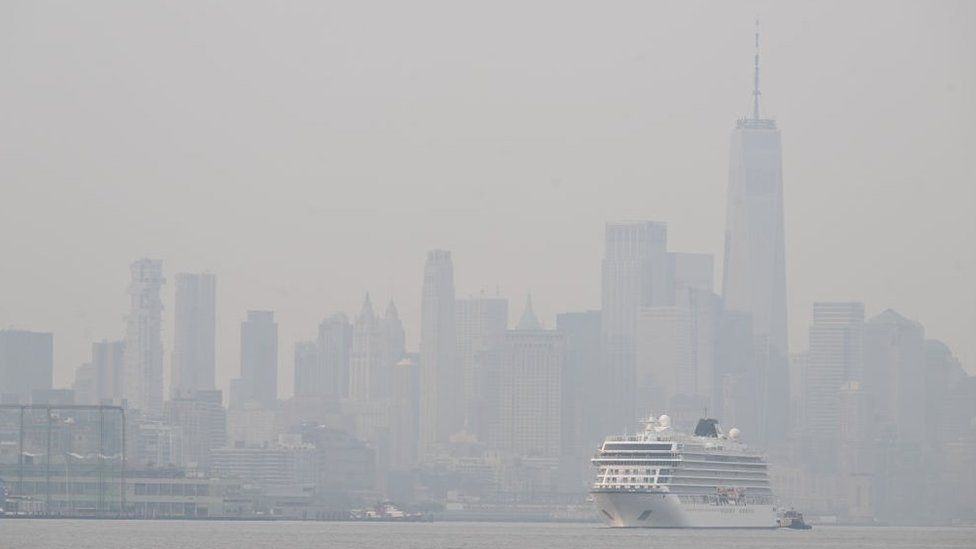Millions of people in North America have been issued high-risk air quality warnings as a result of Canada's ongoing wildfires.
Major Canadian cities, including Toronto and its environs, have been engulfed in wildfire smoke.
As far as New York City and Connecticut, where the air quality has been deemed "unhealthy," the smoke has been reported.
160 fires are burning in Quebec, where the majority of the smoke is coming from.
Tuesday, the Canadian capital's air quality was deemed to pose a "very high risk" to people's health, prompting Environment Canada to issue its strongest air quality warning for the City of Ottawa.
The air quality has been rated as "high risk" in Toronto and the surrounding areas.
In the meantime, the US Environmental Protection Agency (EPA) has rated the air quality as "unhealthy" for a large portion of the northeastern US, especially for those who have had respiratory problems in the past.
Most of New York City and Connecticut are under air quality advisories. As well as extending as far south as Pittsburgh and Washington, DC, they also reach as far south as Boston.
Photos taken in New York on Tuesday morning revealed an orange haze that covered the city's skyline due to smoke from Canadian wildfires that had moved south.
Public health officials have advised against exercising outside and to limit smoke exposure as much as possible because the air can be hazardous to both short- and long-term health.
At least one area in Quebec, the Atikamekw community of Opitciwan, 350 km (217 miles) north of Montreal, has been forced to relocate people with asthma and other respiratory conditions away from the smoke due to the deteriorating air quality.
The wildfire season is still more active than usual in Canada. Because of the dry and hot conditions that are anticipated for much of the season, federal officials warned on Monday that this summer could see Canada's largest fires ever.
More than 3.3m hectares of land have already been burned by fires across the nation, which is 12 times the area burned at this time of year over the previous 10 years.
In Quebec, where fires have so far consumed about 200,000 hectares, thousands of people have also been evacuated across the nation.
British Columbia, Alberta, Ontario, Nova Scotia, and the Northwest Territories have all experienced large fires as well.

According to experts, exposure to wildfire smoke can have a negative impact on one's health in the short and long terms.
Shortness of breath, an elevated pulse, chest pain, or inflammation in the eyes, nose, or throat are some of the immediate side effects of breathing in wildfire smoke, according to University of Toronto professor and director of the Centre of Urban Environments Matthew Adams.
We'll see more hospital visits on these days with higher air pollution, Mr. Adams told the BBC. "And the patients who come to the hospital typically have a respiratory condition that has already existed. ".
However, Mr. Adams noted that exposure to wildfire smoke has also been connected to serious, long-term health problems like cancer or lung disease, particularly for those who live in areas where forest fires occur frequently.
He claimed that tiny smoke haze particles are to blame, as they can enter the bloodstream and other areas of the body and cause DNA mutations and other health problems.
According to some studies, pregnant women and their unborn children may be harmed by prolonged wildfire smoke exposure, Mr. Adams added.
Mr. Adams advised limiting outdoor activity to avoid breathing in wildfire smoke for residents of cities far from the fires but subject to the current air advisories.
Don't worry about it too much, he advised. "Reduce your exposure by remaining inside. ".
But in locations near the fires, Mr. Adams advised putting on an N95 mask outside to prevent breathing in most of the smoke particles.
He also suggested installing Hepa filters and improving the ventilation inside the house to reduce exposure over time.







